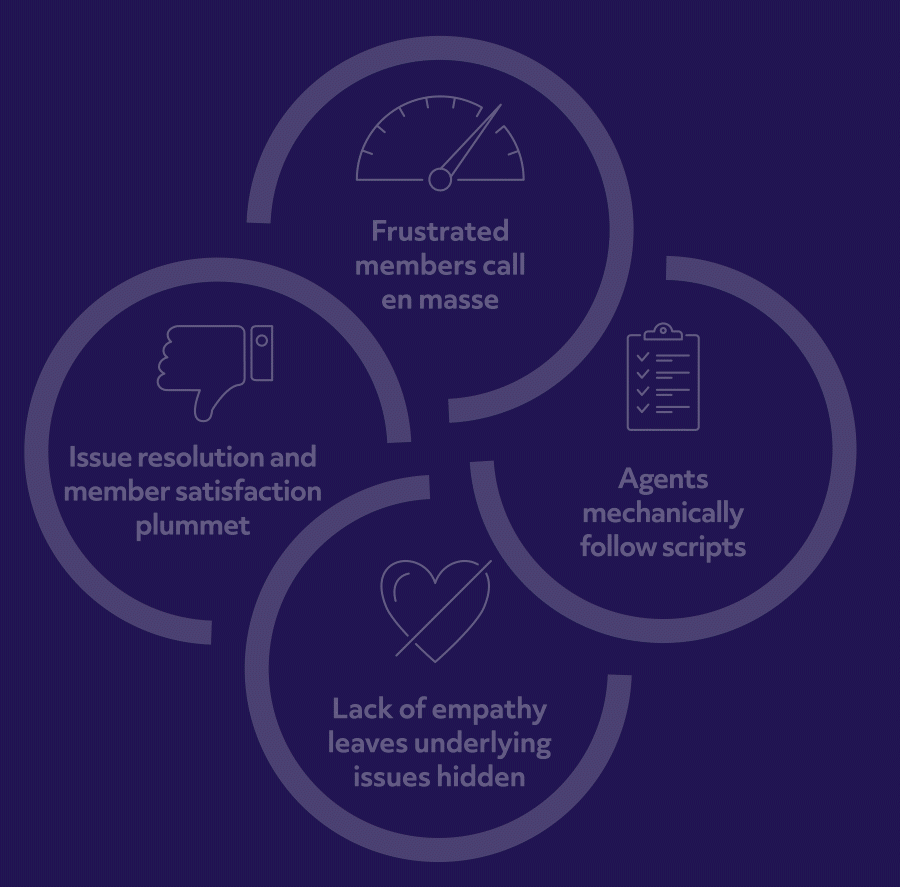Heart of Service

Our client, a major health insurance company, was preparing for a flurry of confused, potentially angry members. Why? Because the innovative new benefits plan it was set to launch featured, for the first time, a high deductible.

The company knew it would need its member services agents to do more than just mechanically follow decision trees and read the scripts supplied to them.

In order to forestall a significant drop in member satisfaction, the company’s service representatives would need to educate, coach, and guide members through the transition.
The Cycle of Service Frustration


But why would the company depend on humans in the first place, when advances in AI and machine learning have produced computer programs that can handle limitless volume without deviation?
An AI, after all, never gets distracted or loses its cool.
The answer is simple: Because there are situations when members are scared, confused, or vulnerable — and they need someone to be there for them. Situations when even the most sophisticated AI will just make things worse.
Situations, in other words, when only the human touch will do.

Our first advice to our client: Stop training reps to mechanically follow scripts.
In place of script-based training for its member support reps, we designed a tailored training and coaching program to help service representatives bring their best selves to every member call by tapping into their innate emotional intelligence.

Our solution encompassed talent acquisition, performance measurement, coaching, and leadership messaging. It featured:

Instead of member satisfaction cratering, as feared, the company saw an immediate uplift across every significant member satisfaction measurement.
|
Personal interest displayed by member service representative |
Speed of issue resolution |
Courtesy of member service rep |
Agents felt the difference, too.
When faced with an angry caller before Heart of Service, I would let my emotions take over. I’d react to them the same way I felt like they were treating me. But now I try to see things from their perspective — to understand why they may feel angry, frustrated, or maybe even scared. That helps me remember that they’re not intentionally attacking me, which helps me stay balanced so I can take the lead and make the conversation more productive.
— A member services representative
.png?width=305&height=80&name=Vantage_Logo_Full%20Color_80x304(RGB).png)